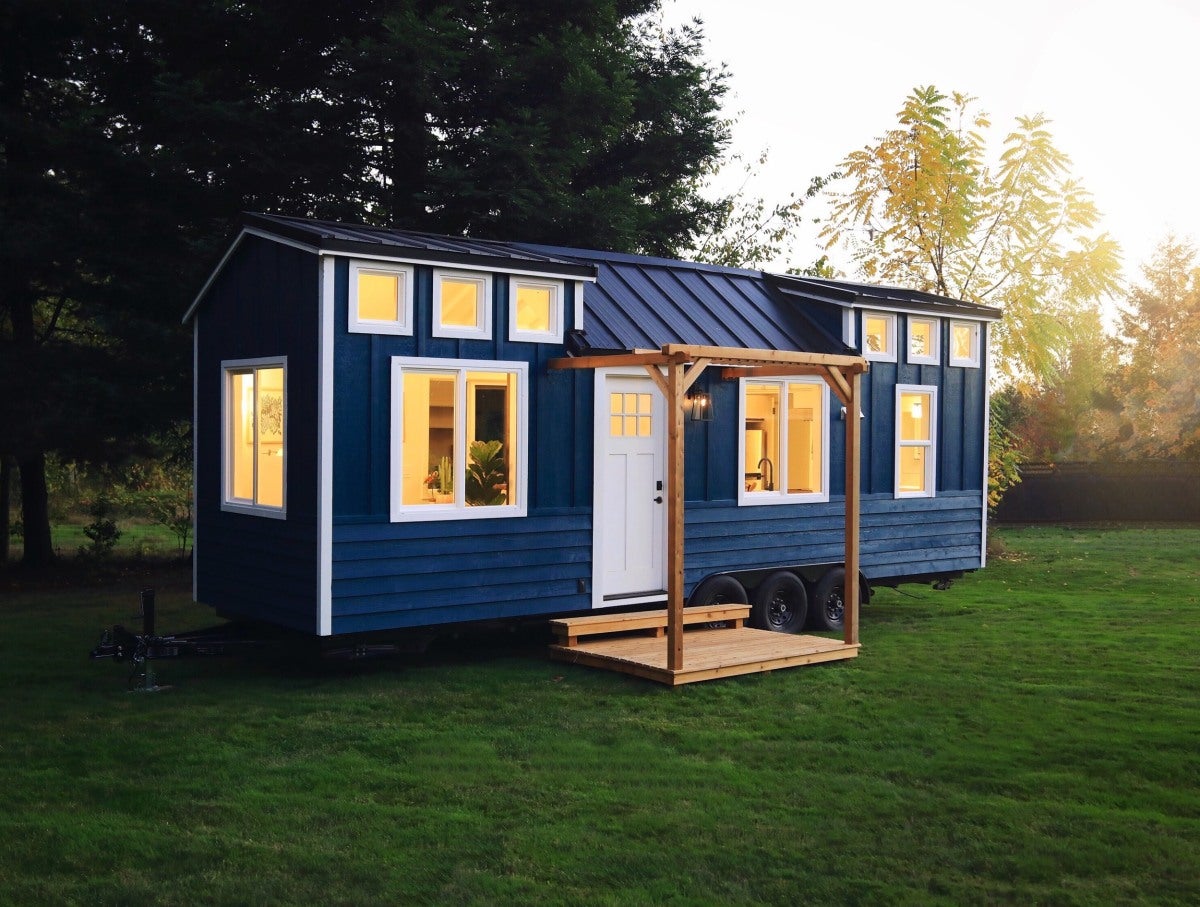Well, This Is One Unexpected Benefit of Living in a Tiny Home
Are you ready to make the jump?
Updated Oct 11, 2018 2:30 PM
We may earn revenue from the products available on this page and participate in affiliate programs.
If you’re charmed by the prospect of downsizing your life and relocating into the tiny home of your dreams, here’s another compelling reason to make the move: According to research done by Maria Saxton, a Ph.D., candidate in environmental planning and design at Virginia Tech, those who live in tiny homes cut their carbon footprint by 45 percent.
Examining the behaviors of 80 tiny house dwellers, Saxton compared their carbon footprints before and after they lived in their small-scale homes for a year and published her findings in The Conversation. Detailed interviews with nine participants showed that moving into a tiny home resulted, more often than not, in increased water conservation and use of solar power, recycling, and conscious shopping and a decrease in meat consumption and car travel. Saxton’s findings showed that 86 percent of tiny home downsizers’ changed behaviors had a positive impact on their environmental footprints.
This research makes a case for sustainably minded folks to consider tiny home living, but even if a downsize isn’t in your future, you can take a lesson in environmental consciousness from those who have made the move. Apply these tips to your own home and cut your carbon footprint no matter where you live.
Consider solar panels
Not only does solar energy not produce air and water pollution or greenhouse gasses, unlike other sources of power, but it can also save you money. One study by a professor at Boston University showed that panels could help homeowners to even make money by generating excess energy they can sell.
Practice KonMari when you’re shopping
Sure, the KonMari method can help keep your home stress-free and decluttered, but when you start seriously asking yourself if things spark joybefore you buy them, you can become a more conscious consumer. Tiny house dwellers have to be mindful of what they buy since they have less real estate to stash binge purchases. Even if you have plenty of organizing space, a little extra thought can keep you from buying things you’re destined to toss anyway.
Conserve water
Off-grid tiny homes use filtered rainwater or water tanks for their water supply, so people who live in them have to be mindful about how they use their supply. If you do live on the grid, it’s still beneficial to consider how much water you use every day. According to The Water Footprint Calculator, installing low-flow faucets, using an energy-efficient washing machine, fixing leaks, and taking shorter showers can help you cut down your water use.
See more amazing tiny homes: How One Tiny Home Designer Makes a Small Space Feel 10 Times Bigger Here’s How You Can Snag a Tiny House for Free This Tiny House Squeezes Our Dream Kitchen and Shower Into 240 Square Feet
